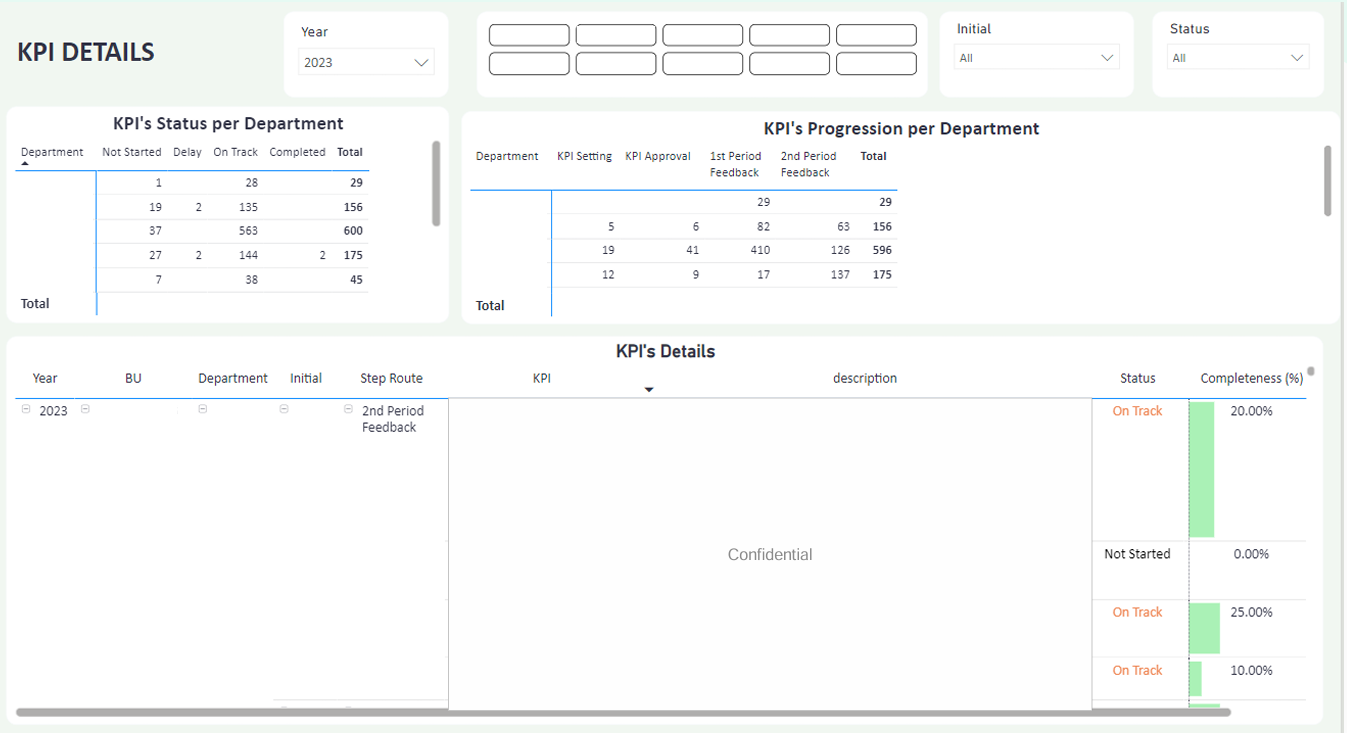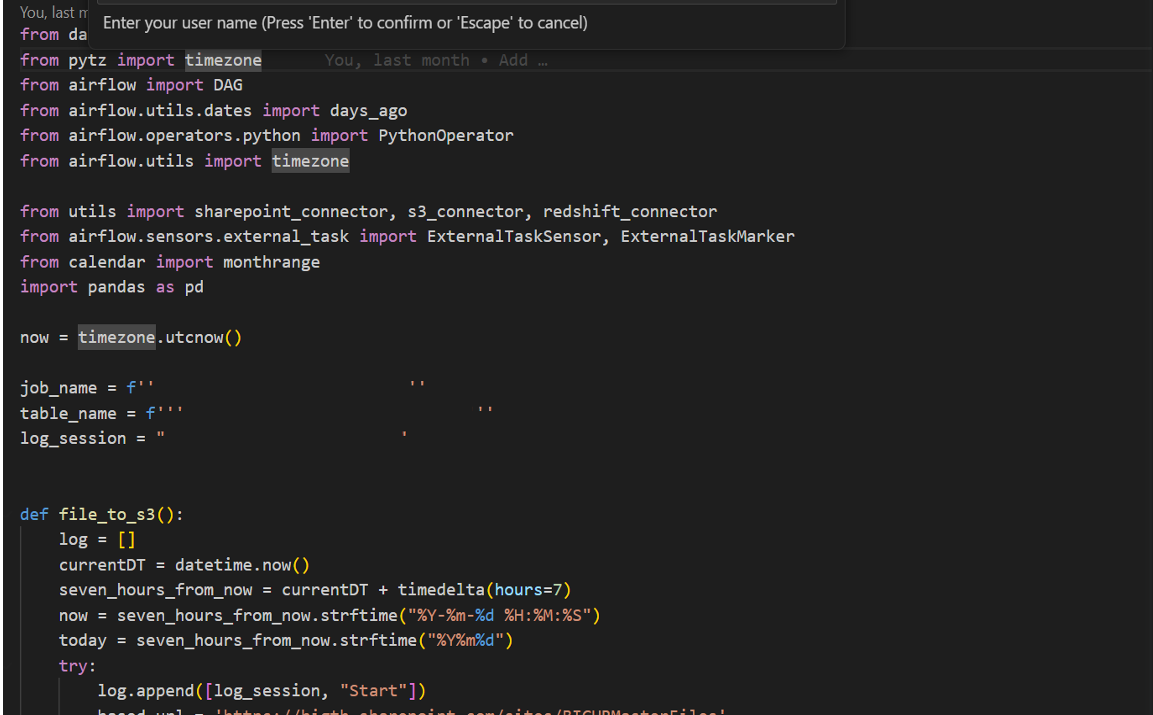The 'KPI Progress' project was a multifaceted and rewarding experience during my
internship. In this project, I played a dual role as both a data engineer and a data analyst to
analyze Key Performance Indicator (KPI) data for all employees from 2022 to 2023. The
project involved a comprehensive data engineering process, data cleansing, ETL tasks, and the development of an interactive dashboard to assess individual
KPI progress.
As a data engineer, my first task was to perform data cleansing to ensure the data's
reliability. Utilizing Python in Jupyter Notebook, I applied various data
cleaning techniques to remove inconsistencies, duplicates, and missing values from the KPI
dataset. This step was crucial to ensure a solid foundation for further analysis. Next, I
implemented data upload processes using Python and SQL to transfer the cleansed data to
AWS S3. Then, I utilized AWS Redshift to store and manage the dataset efficiently.
To automate the data processing and refresh the dataset regularly, I employed Apache
Airflow, an open-source platform for orchestrating complex workflows. I created data
pipelines and scheduled them to refresh the KPI data every first ten days of each month. This
approach ensured that the dashboard always displayed the most up-to-date information,
enabling real-time monitoring of KPI progress.
With the data engineering process completed, I transitioned into the role of a data
analyst. Leveraging DAX in Power BI, I designed and developed an interactive dashboard
that allowed each evaluator to track the progress of KPIs.


